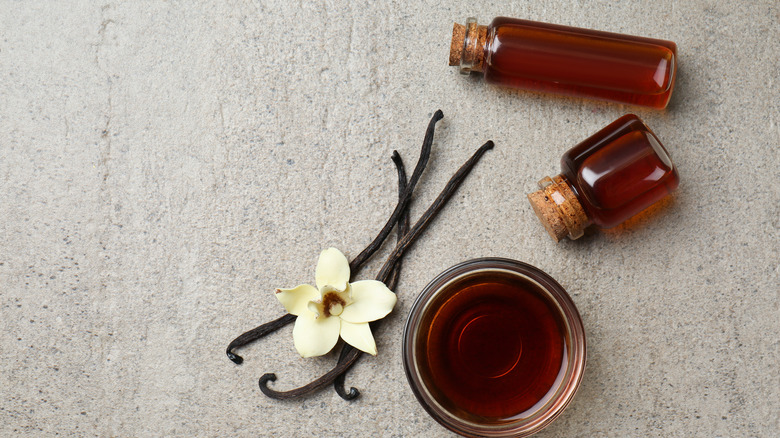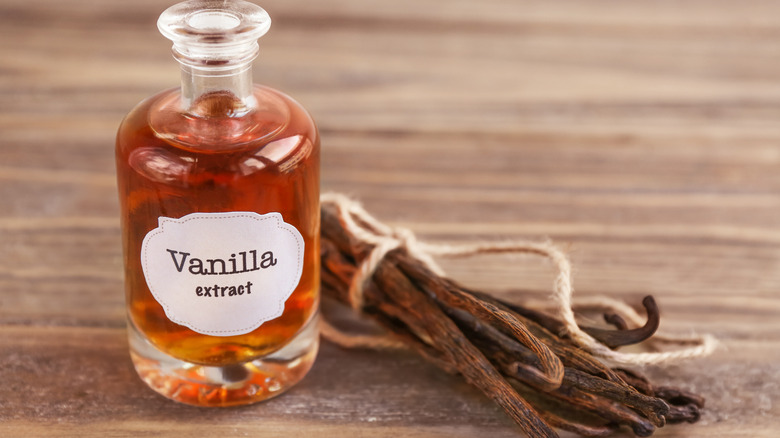This Is Where Vanilla Flavoring Really Comes From
When perusing the grocery store shelves, you may have noticed two different types of vanilla extract that have a significant price difference. What you may not know about imitation vanilla extract and real vanilla extract is that the difference goes beyond price to the actual ingredients.
Imitation vanilla extract is popular to use in baking recipes, as it provides the vanilla flavoring for a lower cost, is low in calories, sodium, and contains no fat (via Livestrong). But it can include chemical additives by using lignin vanillin, which mimics the natural extract from real vanilla by using paper manufacturing wastes.
Imitation vanilla can also contain glycerin or a glycol base, as well as small amounts of alcohol, depending on the specific brand. Most of the alcohol does burn off in cooking, but it is something to be aware of.
Real vanilla extract contains vanilla beans, water, and alcohol to extract the flavor from the beans (via Better Homes and Garden). The cost is higher than imitation extract due to vanilla beans being rare and hard to grow or harvest.
Are the rumors about vanilla extract and beavers true?
Real vanilla extract is good to use in no-bake or low-heat desserts and recipes, as the taste is more noticeable than in baked goods. Using this method gives you the best bang for your buck in regards to flavor.
You may have also heard some rumblings of vanilla extract containing something called "castoreum," which is a strong-odor substance secreted from beavers where they scent-mark their territory. While that can sound alarming, don't panic — castoreum has not commonly been used in American food products in recent years (via Snopes). That means either the imitation or real vanilla extract in your cabinet is more than likely castoreum-free.
So now that you know where both vanilla extracts come from, will you choose real or imitation? The decision is up to you, but baking experts say if cost is a consideration, using imitation vanilla extract in your baked goods is just fine — in fact, you will barely taste the difference.


